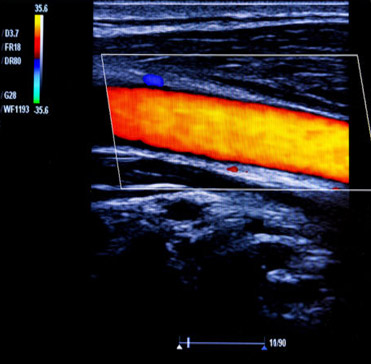Understanding Arterial Doppler Ultrasound: A Comprehensive Guide
Arterial Doppler ultrasound is a widely used diagnostic procedure that helps healthcare professionals assess blood flow in the arteries. This non-invasive technique utilizes sound waves to generate real-time images of the blood vessels, aiding in the evaluation of vascular conditions. In this comprehensive guide, we will delve into the world of arterial Doppler ultrasound, exploring its mechanism, benefits, applications, and its significance in assessing vascular health.
Understanding Arterial Doppler Ultrasound
Arterial Doppler ultrasound is a specialized imaging technique that utilizes the Doppler effect principle to assess blood flow within arteries. By measuring the frequency shift of sound waves reflected by moving red blood cells, this procedure provides valuable information about the speed, direction, and overall health of arterial blood flow.
How Does Arterial Doppler Ultrasound Work?
During an arterial Doppler ultrasound, a healthcare professional applies a gel to the area of interest, typically an arm or leg, and uses a transducer to emit and receive sound waves. The transducer emits high-frequency sound waves that bounce off moving blood cells. By analyzing the frequency shift in the returning sound waves, the Doppler ultrasound machine converts the data into visual representations, such as colorful Doppler waveforms, spectral analyses, and velocity measurements.
Benefits of Arterial Doppler Ultrasound
Arterial Doppler ultrasound offers numerous benefits in the field of cardiovascular diagnostics. Firstly, it is non-invasive, meaning it does not require any surgical incisions or injections, making it safer and more tolerable for patients. Additionally, it provides real-time and dynamic information about arterial blood flow, allowing healthcare professionals to assess the presence of arterial stenosis, blockages, or abnormalities. This early detection can lead to timely interventions, preventing further complications such as strokes, heart attacks, or limb ischemia.
Applications of Arterial Doppler Ultrasound
Arterial Doppler ultrasound finds applications in various medical fields, including cardiology, vascular surgery, and radiology. It assists in diagnosing and monitoring conditions such as peripheral arterial disease, deep vein thrombosis, varicose veins, arterial occlusions, and aneurysms. Moreover, it aids in planning surgical interventions, assessing graft patency after vascular procedures, and monitoring the progress of vascular diseases.
Significance of Arterial Doppler Ultrasound for Vascular Health Assessment
Arterial Doppler ultrasound plays a crucial role in assessing vascular health. By providing detailed information about blood flow patterns, it helps identify abnormalities such as arterial stenosis, the presence of blood clots, or the risk of aneurysm rupture. Early detection of these issues allows healthcare professionals to formulate appropriate treatment plans, promote preventive measures, and monitor the effectiveness of interventions.
Conclusion
In conclusion, arterial Doppler ultrasound is an indispensable tool in the assessment of vascular health. Its non-invasive nature, coupled with its ability to provide real-time and dynamic information, makes it an invaluable diagnostic procedure. By utilizing sound waves to evaluate blood flow patterns, this technique assists in early detection, timely interventions, and the prevention of cardiovascular complications. As you delve into the fascinating world of arterial Doppler ultrasound,
